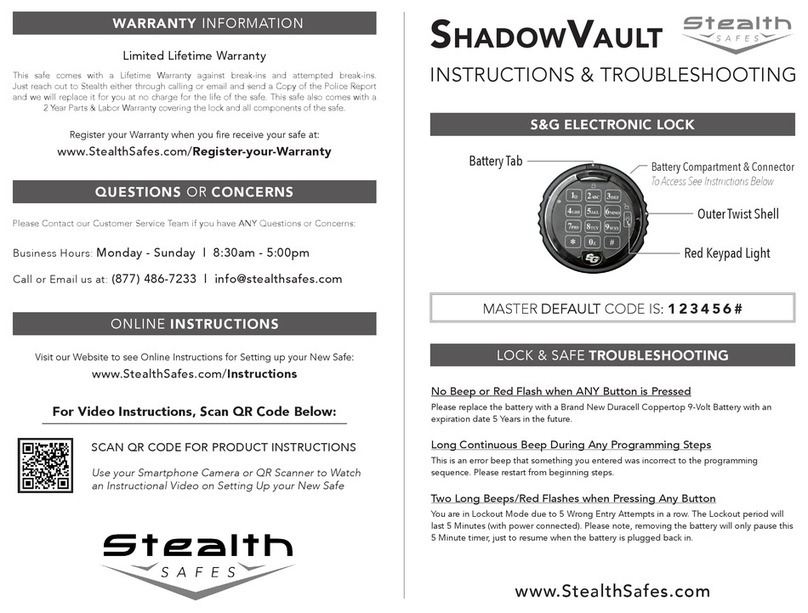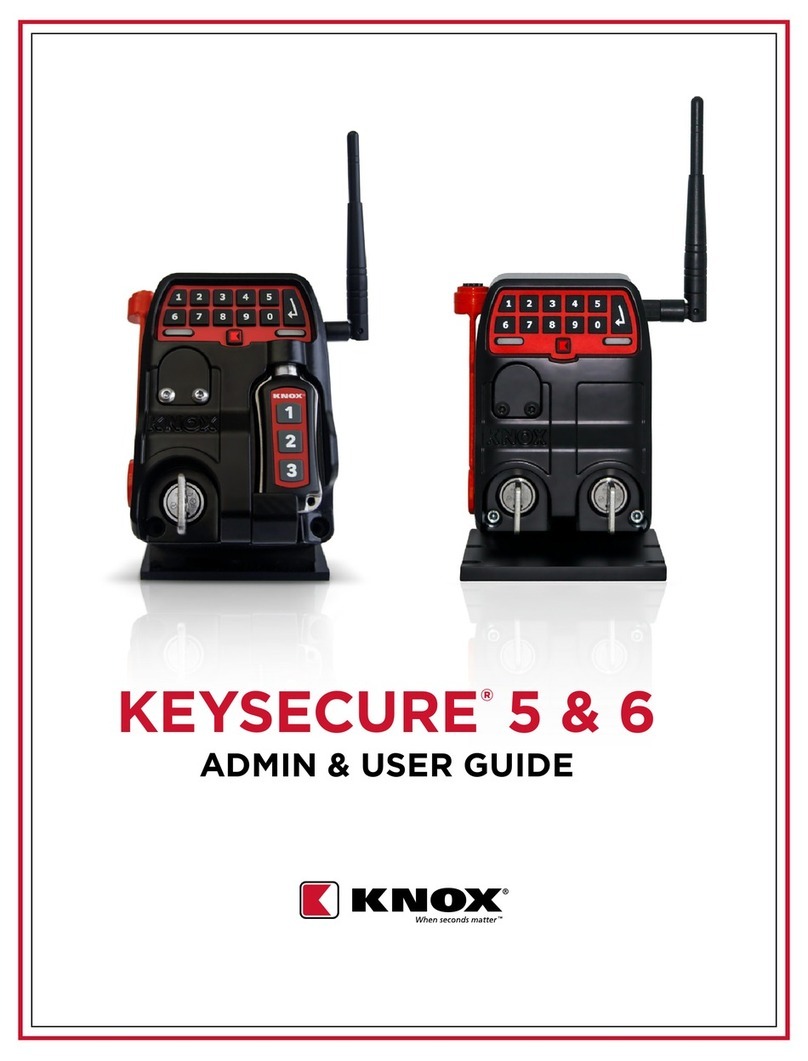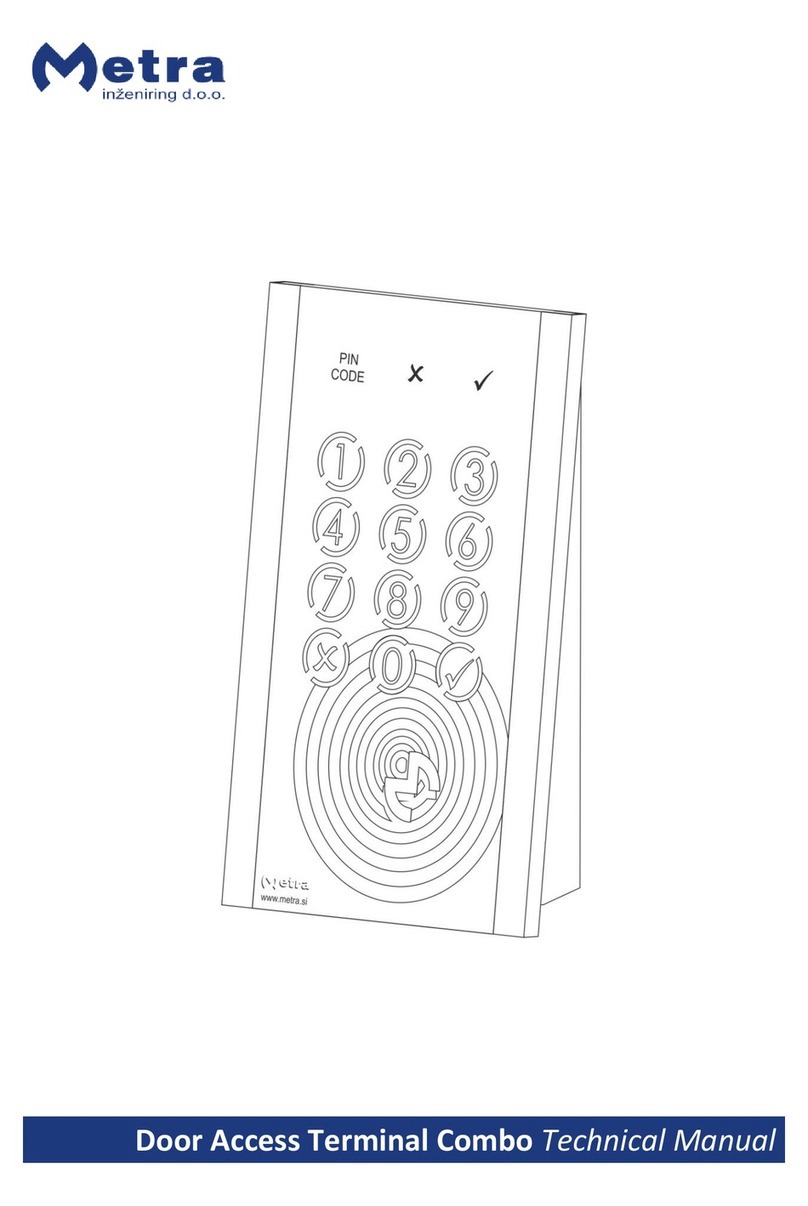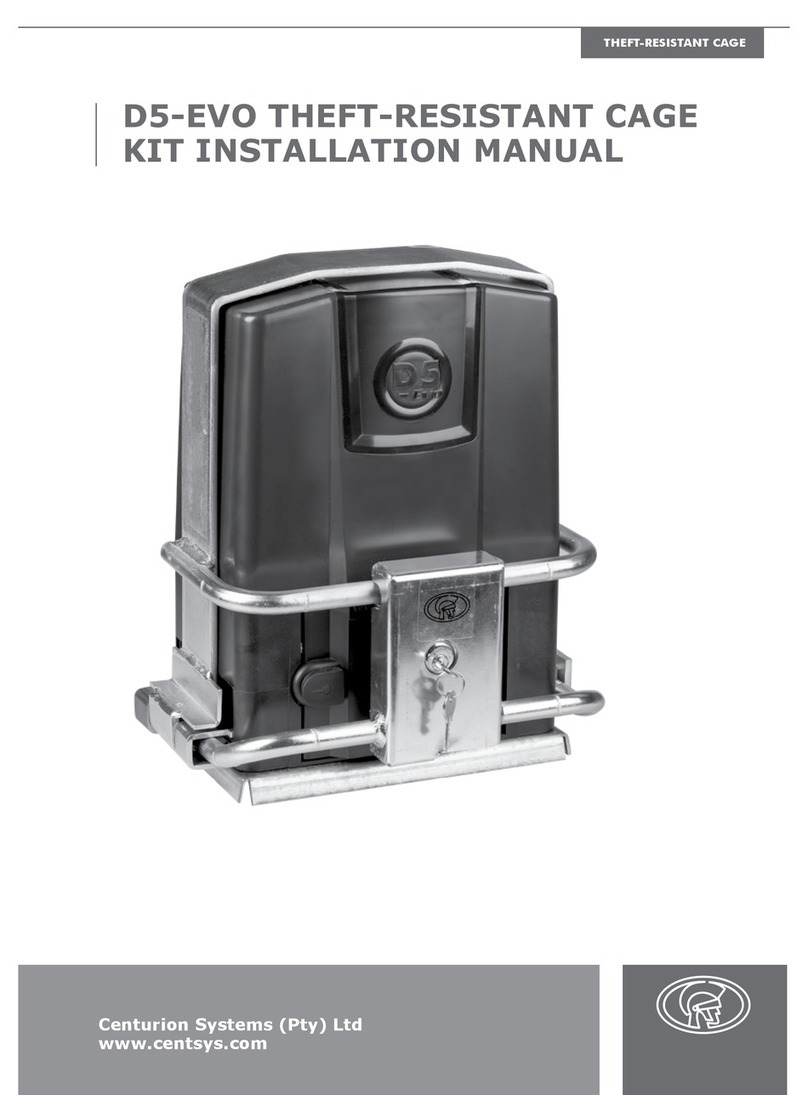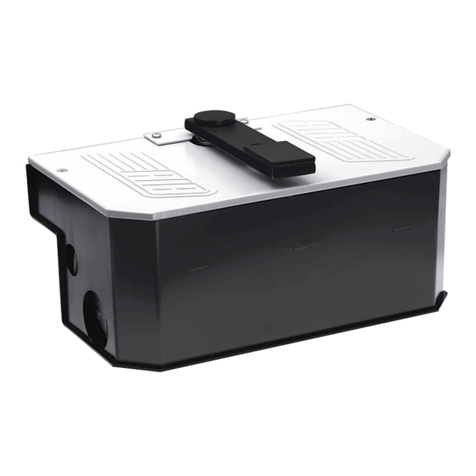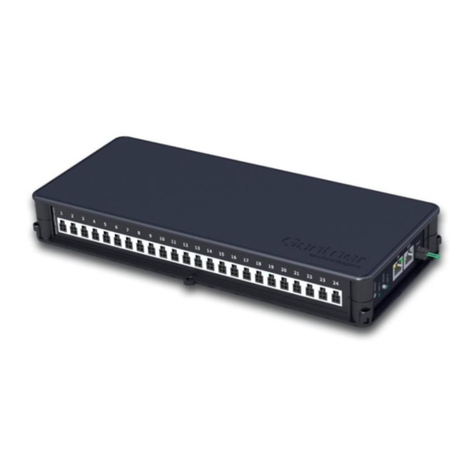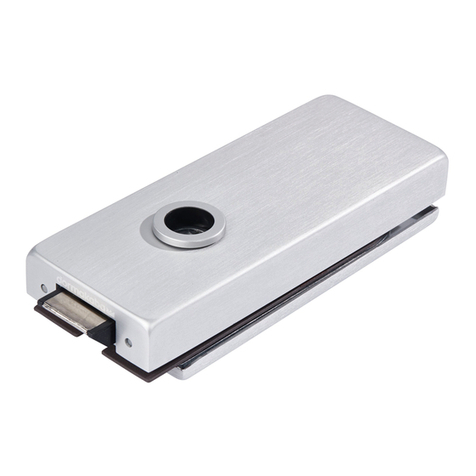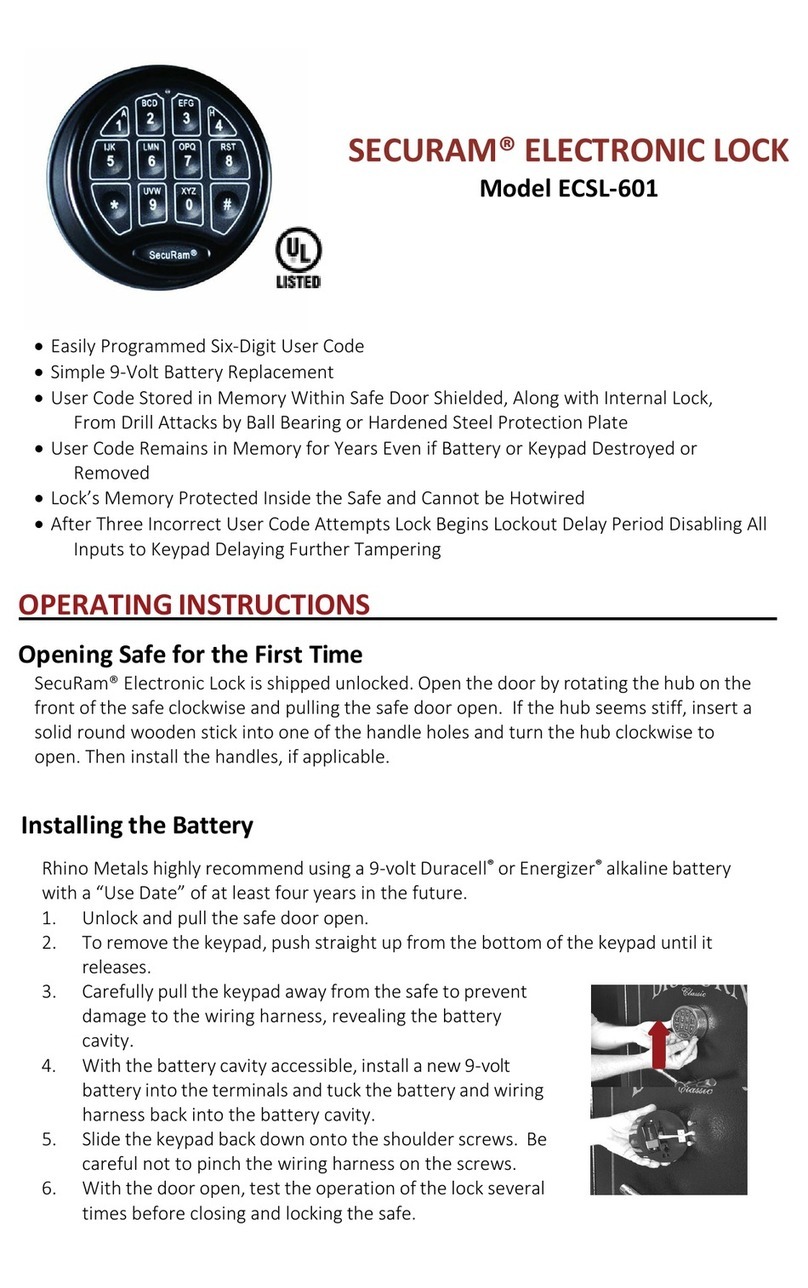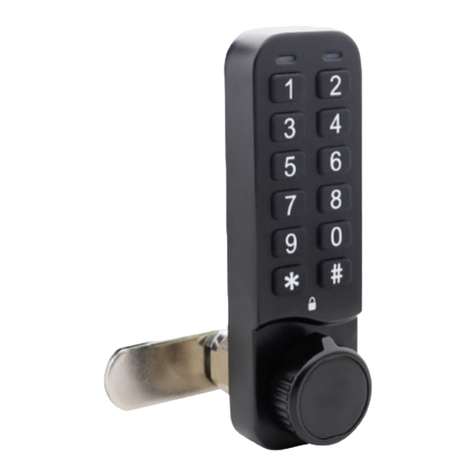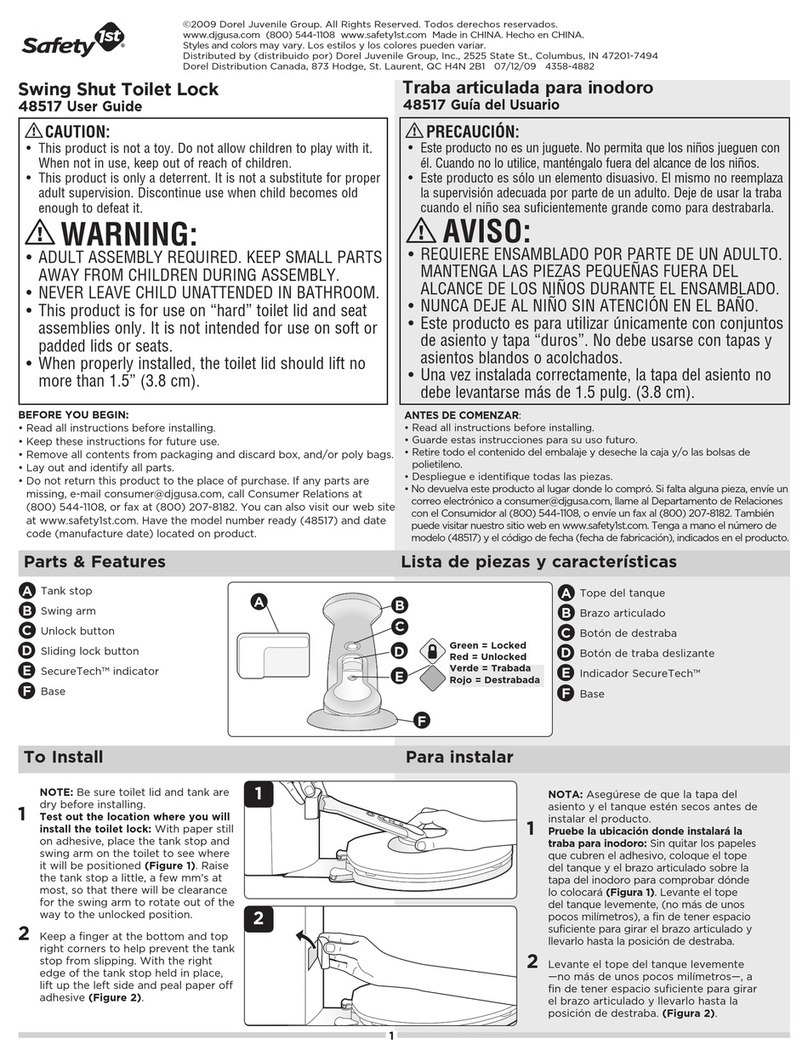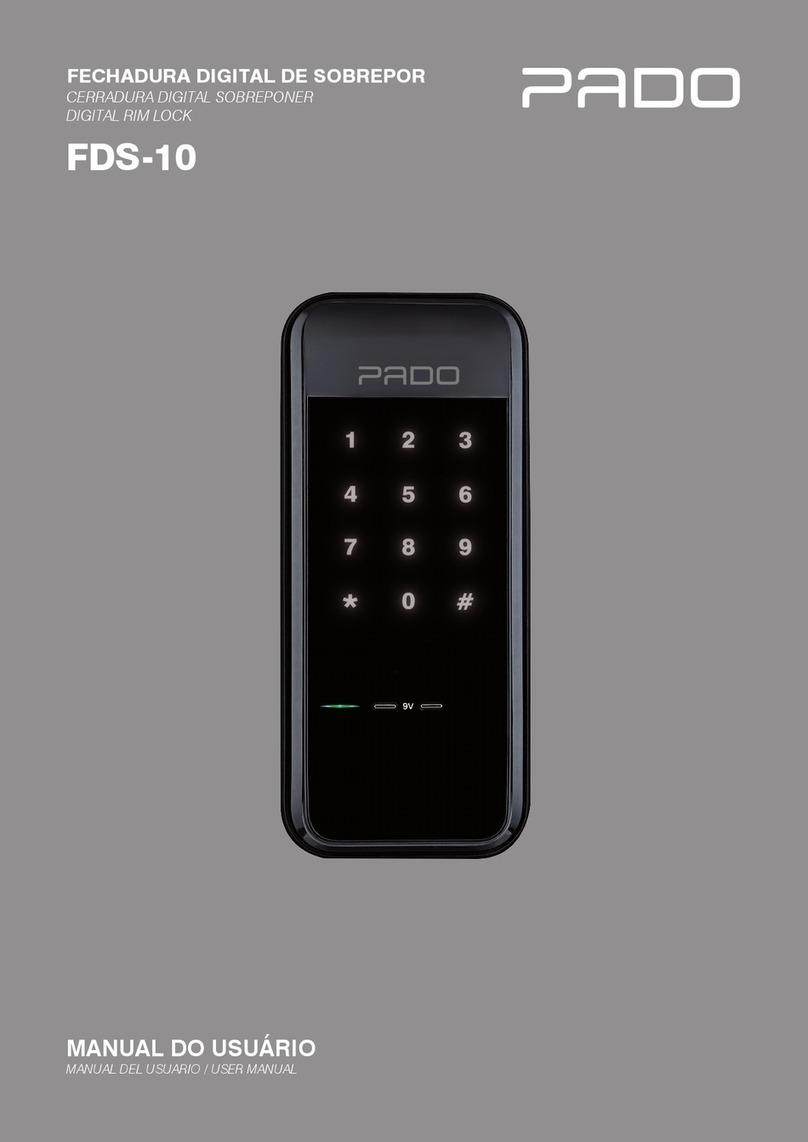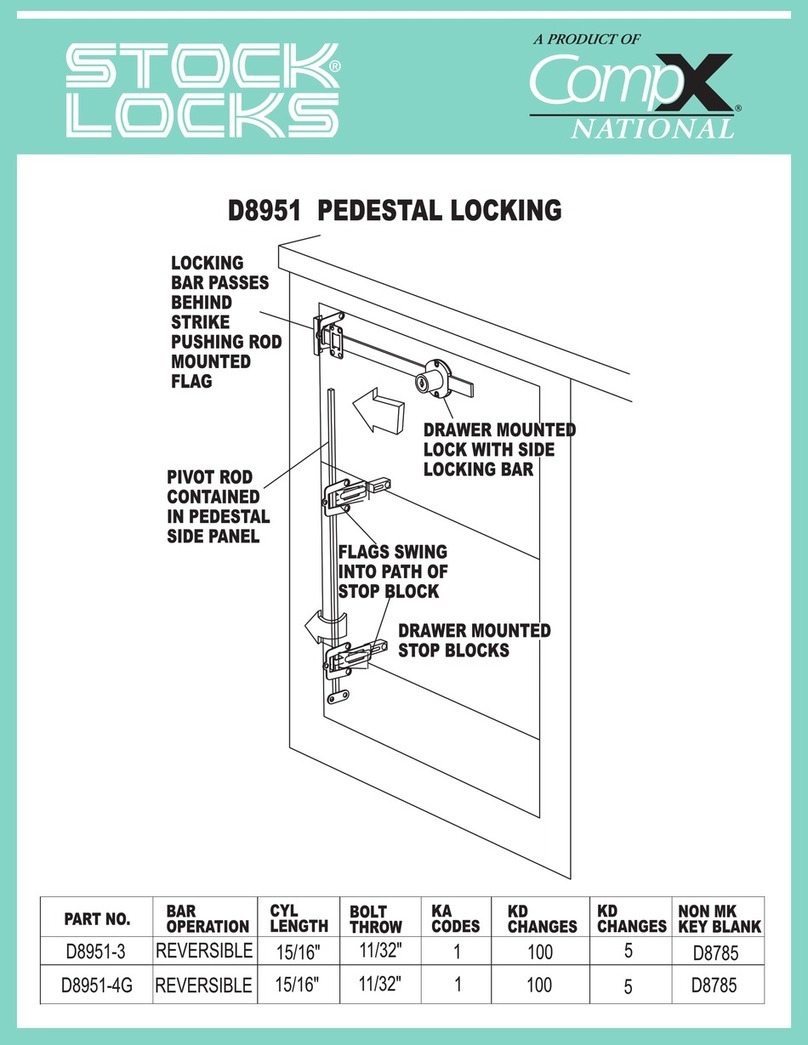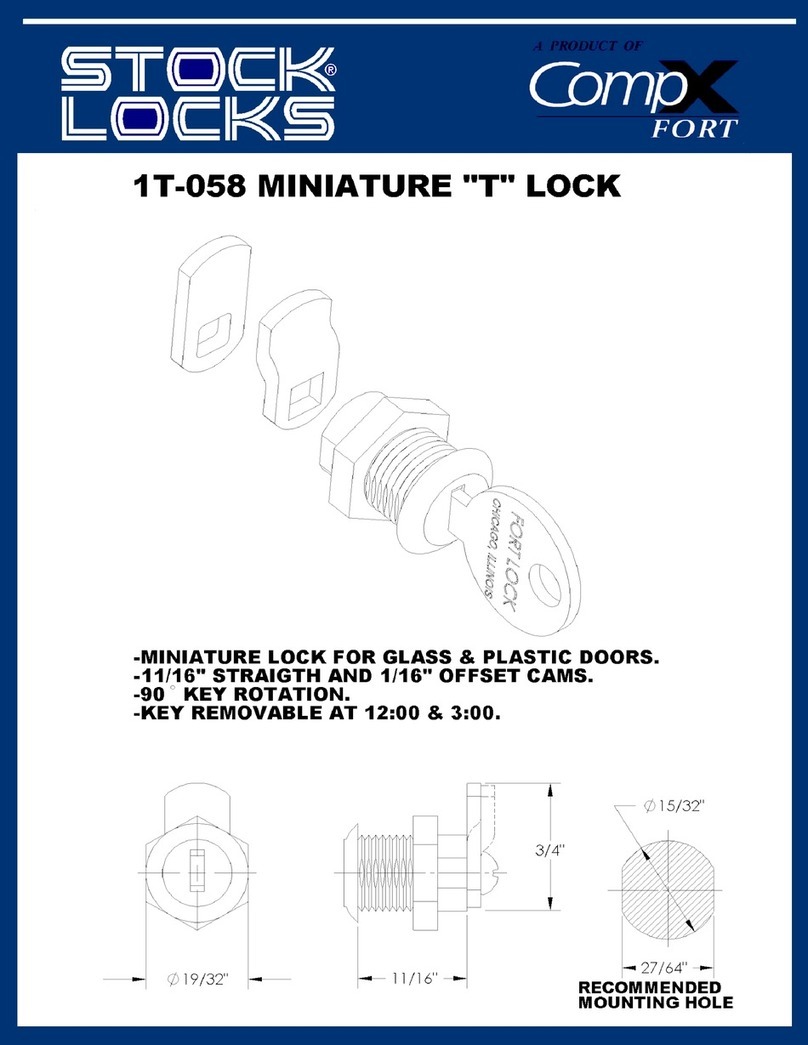Section 3 below provides the full menu of features that can be set up
on the system.
An explanation of each feature is provided in Section 21, Controller
Features of the full installation manual available on
www.centsys.co.za.
When setting up the D5-Evo, D10 and D10 Turbo system via the LCD
display, all the steps that have to be followed are clearly provided via
the display. It is only necessary to note the following:
&To get into Setup Mode, press the ( ) button for two seconds and
follow the instructions provided
&The buttons provided on the controller for navigating the system are
not marked because at each step during the setup, the function
given to each button is provided on the display
&When not in Setup Mode, i.e. Normal Mode, the ( ) button is
used as a test button for operating the system
&The triangular up or down ( ) buttons are used to scroll through
the diagnostic screens
&For each feature a Factory Default Setting has been programmed
into the controller. Referred to as an Operating Standard or
Profile, these defaults have been determined to suit the
requirements of the specific region where the installation is being
carried out. It is only necessary to change a feature where the
default does not suit the installation. When selecting any feature in
the menu, details of the current setting stored in the controller are
displayed
The schedule of Factory Defaults are detailed in the full
installation manual, available for download on
www.centsys.co.za
Icon
Icon
Sub-menu
Sub-menu
Menu
Menu
4. Modes of Operation
4.1. Operating mode 4.1.1. Standard Mode
4.1.2. Condominium Mode
4.1.3. Reversing Mode
4.1.4. PLC
4.1.5. Deadman Control Mode
7. Pedestrian
7.1. Pedestrian open position
7.2. Pedestrian Autoclose time
7.3. Pedestrian pre-open delay
7.4. Pedestrian pre-close delay
1. If powering up the system
ex-factory, it will request for
the operating Profile
(Operating Standard) to be
set.
&ZA: Standard profile for
South Africa
&CE: Standard profile for
the European Union
&UL325: Standard profile
for the USA, compliant
with requirements but not
certified
2. Select the Profile that will
Prior to commissioning the system, please ensure that you
have connected the wiring of all components in the system to
the controller terminals correctly. Kindly refer to the diagrams
provided on the back of this document for details.
10. General settings for
D5-Evo and D10
10.1.Operating standard
(ZA; CE; UL325)
10.2.Reset options 10.2.1. Factory defaults
10.2.2. Delete all remotes
10.2.3. Delete all Time-periods
and exclusions
10.2.4. Reset all
10.3. Diagnostic screen
on/off
10.4. Test button
disabled/enabled
10.5. Backup EEPROM
10.6. Restore EEPROM
suit the specific region from the list. With this set, the system will
automatically proceed to the Limit Setup Menu. Follow the
onscreen instructions to complete the setup procedure.
3. If powering up at any stage after this, push and hold the oblong
enter button ( ) for two seconds. Select the Limits Menu by
pressing the enter button ( ). Follow the onscreen instructions to
complete the setup procedure.
1.1. Setup wizard
1. Setting limits
2. Safety
2.1. Collision force 2.1.1. Opening collision force
2.1.2. Closing collision force
2.5.1. Indicator output
2.5.2. Closed indication
2.5.3. Partly closed indication
2.5.4. Closing indication
2.5.5. Partly open indication
2.5.6. Opening indication
2.6.7. Open indication
2.5.8. Pedestrian indication
2.5.9. Unknown indication
2.2. Collision count
2.3. Alarm output
2.4. Lck input as ESTOP
2.5. External gate
indication status
5. Run profile
5.1. Positive Close Mode 5.1.1. Positive Close Mode Status
5.1.2. Positive Close Mode Force
5.2. Pre-open delay
5.3. Pre-close delay
5.4 Opening speed
5.5. Closing speed
5.6. Ramp-up distance
5.7. Ramp-down distance
5.8. TRG stop distance
5.9. IRB stop distance
5.10. Crawl distance
5.11. Torque limit
6. Infrared beams
6.1. PIRAC control 6.1.1. PIRAC status
6.1.2. Stop on open
6.1.2.1. Stop on open
status
6.1.2.2. Stopping
distance
6.2.1. On/Off
6.2.2. Test beam selection
(IRBC; IRBC and
IRBO)
6.4.1. Ambush Alarm
6.4.1.1. Ambush Alarm
on/off
6.4.1.2. Broken IRB time
6.3. IRBO=IRBC on closing
6.4. IR beam alarms
6.2. IR beam test
6.4.2. Break-in Alarm on/off
6.4.3. Alarm output selection
8. Courtesy Light
8.1. Courtesy Light Timer
8.2. Light Profile 8.2.1. Courtesy Light
8.2.2. Pre-flash A
8.2.3. Pre-flash B
8.2.4. Pre-flash C
9.4. Delete all Time-periods
and exclusions
9. ChronoGuard
9.1. Time and date
9.2. Time-Periods 9.2.1. Add Time-period
9.2.1.1. Auto function
9.2.1.2. Time-bar
function
9.3.1.1. Auto function
9.3.1.2. Time-bar
function
9.3. Exclusions
9.2.2. Delete Time-period
9.2.3. Edit/Review Time-
periods
9.3.1. Add exclusion
9.3.2. Delete exclusion
9.3.3. Edit/Review exclusions
3. Autoclose
3.1. Autoclose Status
3.2. Autoclose Timer
3.3. Autoclose Override
3.4. Autoclose advanced
options 3.4.1. Autoclose fully open
3.4.2. Autoclose partly open
3.4.3. Autoclose partly closed
11.1. Add remotes
11.2. Delete remotes 11.2.1. Delete remote by ID
11.2.2. Delete remote button
11.2.3. Delete remote by
button
11.2.4. Delete not present
On/Off
11.2.5. Delete all remotes
11. Remote controls
11.3. Edit remote button
11.4. Autolearn
11.5. Lock Tx menu
11.6. Onboard receiver
enable/disable
Press button of
valid transmitter
(if menu locked)
Inhibitor name Number of beeps
Priority Fault type Gate
continues
to operate
User can
correct
error
Break-in alarm Continuous tone for 30 seconds Alarm N/A N/A
Ambush alarm Continuous tone until IRBs are cleared Alarm N/A N/A
Multiple collision Periodic until condition is cleared by user (500/500ms) Collision No Yes
Battery low Three beeps periodically for 30 seconds Power system fault Yes* Yes
Auxiliary overload Five beeps periodically for 30 seconds Hardware No No
Holiday Lockout One beep periodically for 30 seconds User No Yes
Emergency stop One beep periodically for 30 seconds User No Yes
Time-barring One beep periodically for 5 seconds User No Yes
No limits set Three short beeps for 5 seconds Lost No Yes
Mains failure Two beeps periodically for 30 seconds Power system fault Yes Yes
Beams broken (any) One beep periodically for 30 seconds User No Yes
Beams failure Five beeps periodically for 30 seconds Hardware No No
DOSS disconnected Five beeps periodically for 30 seconds Hardware No No
Fuse blown Five beeps periodically for 30 seconds Hardware No Yes
Motor disconnected Five beeps periodically for 30 seconds Hardware No Yes
Bridge damaged Five beeps periodically for 30 seconds Hardware No No
Gate stalled Four beeps periodically for 10 seconds Collision No Yes
No magnet detected Periodic while gate runs (500m/500ms) Lost Yes Yes
A warning buzzer will sound (where applicable) as per the table
below:
Gate will close fully and then shut down for two minutes
The D5-Evo, D10 and D10 Turbo controllers have a series of
diagnostic LEDs which indicate the state of the inputs.
Normally-open inputs are indicated by a red LED, and
normally-closed inputs by a green LED.
An illuminated red LED indicates that the signal is present
(e.g. intercom button pressed), while a non-illuminated green LED
indicates that the signal is absent (e.g. IRB broken).
Safety Close - green LED
On when the closing beam
is not activated
Safety Open - green LED
On when the opening
beam is not activated
Lck/Stp - green LED
On when the Lck/Stp
input is not activated
Trg - red LED
On when the trigger signal
is present
Ped - red LED
On when the pedestrian
signal is present
FRX - red LED
On when a free-exit
signal is present
Aux - red LED
On when an auxiliary
signal is present
Status- red LED
This LED indicated the status of
the gate as per the table below:
LED indication Gate status
Off Gate is closed
On Gate is partially or fully open
Continuous slow flash Gate is opening
Continuous fast flash Gate is closing
One flash every two seconds Pillar Light Override is activated
Two flashes every two seconds No mains present
Three flashes every two seconds Battery voltage is low
Four flashes every two seconds Multiple collisions have occurred
1. Battery icon
Indicates the state of charge of the battery.
&Four solid bars = full capacity
&Two solid bars = 50% capacity
&No solid bars, with the icon flashing = battery empty
2. Mains icon
Displays the presence or absence of mains voltage:
&Plug solid = mains present and battery charging
&Plug hollow and flashing = No mains present and battery not
charging
3. Autoclose information
&Displays the state of the Autoclose function
&Displays OFF if Autoclose is not selected
&OVR if Autoclose is overridden, and the remaining Autoclose
time if Autoclose is active
&POVR indicates that the PIRAC option is overriden
4. Pillar light information
&Displays the remaining light time if Courtesy Light Mode is
selected
&Pre-flashing Mode is displayed if Pre-flash is selected
&LIT will be indicated if the pillar light has been turned on
permanently
5. Onboard receiver information
Displays the current input being activated by the onboard receiver.
6. Status information
Displays useful information regarding the status of the gate.
The LCD display shows useful information regarding the status of the
system.
CLOSED
OFF
A 0:00
L
1 65432
10. General settings for
D10 Turbo
10.1. D10 Turbo select
10.2. Operating standard
(ZA; CE; UL325)
10.3. Reset options 10.3.1. Factory defaults
10.3.2. Delete all remotes
10.3.3. Delete all Time-periods
and exclusions
10.3.4. Reset all
10.4. Diagnostic screen
on/off
10.5. Test button
disabled/enabled
10.6. Backup EEPROM
10.7. Restore EEPROM
TM
TM
D5-Evo, D5-Evo Low Voltage
D10 and D10 Turbo
Pocket System Configuration Guide
TM
TM
2. Setting up additional features
3. Menu navigation map
4. LCD display
5. Diagnostic LEDs
6. Buzzer feedback
Subscribe to the newsletter: www.CentSys.com/Subscribe
@askCenturion
facebook.com/CenturionSystems
YouTube.com/CenturionSystems
Connect with us on:
Call Centurion Systems (Pty) Ltd South Africa
Head Office: +27 11 699 2400
Call Technical Support: +27 11 699 2481
from 07h00 to 18h00 (UTC+2)
Call: 1300 CENTSYS (1300 236 879)
After Hours International Technical Support Call Centre
+27 11 699 2481 (16:00 to 02:00 - Australian Eastern Time))
Centurion Systems (Pty) Ltd
www.centsys.com
D5-EVO D10 D10 TURBO
POCKET CONFIGURATION GUIDE
www.centsys.com
SAP: 1010D010002_29062018
DOC: 1010.D.01.0003_29062018
E&OE Centurion Systems (Pty) Ltd reserves
the right to change any product without prior notice
All product and brand names in this document that are accompanied by
the ® symbol are registered trademarks in South Africa and/or
other countries, in favour of Centurion Systems (Pty) Ltd, South Africa.
The CENTURION and CENTSYS logos, all product and brand names in
this document that are accompanied by the TM symbol are trademarks
of Centurion Systems (Pty) Ltd, in South Africa and other territories;
all rights are reserved.
We invite you to contact us for further details.
www.centsys.com.au
www.centsys.com
SLIDING GATE MOTORS

